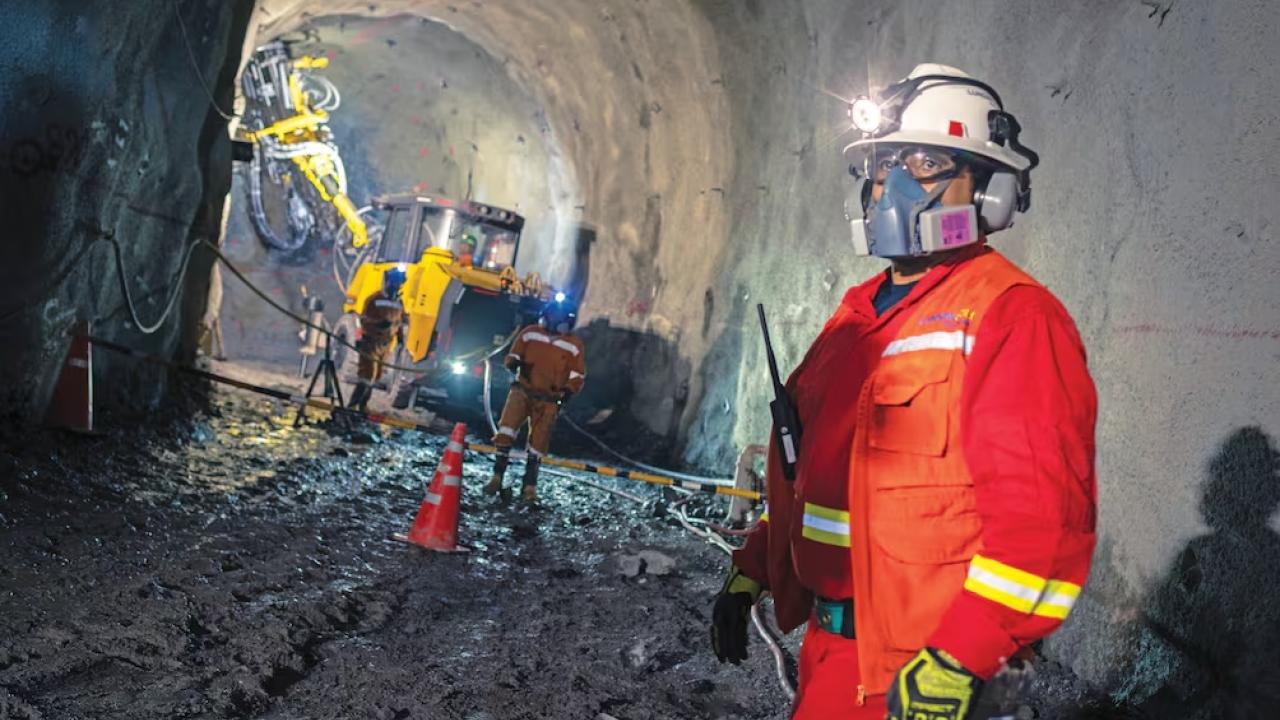
The latest report from the Ecuadorian Central Bank shows that US$ 258 million less was exported from July to September and the impact of the blackouts is yet to be known.
Ecuador's mining exports performed poorly in the third quarter of 2024, influenced by external and internal factors.
Although foreign sales totaled US$ 766 million between July and September, this represented a 25.2% drop compared to the same period in 2023, when US$ 1,024 million were recorded, according to the latest mining sector bulletin published by the Central Bank of Ecuador (BCE).
The numbers reflect that US$258 million in exports were lost in the third quarter of 2024. And the impact of energy rationing, which worsened in the fourth quarter, is still to be seen.
The third-quarter decline is mainly attributed to reduced demand in key markets such as India and the United Arab Emirates, as well as irregularities detected in local mining concessions.
Regarding the latter, the irregularities were discovered through investigations carried out by the Prosecutor's Office, the Financial and Economic Analysis Unit (UAFE) and the Vice Ministry of Mines, the BCE points out.
On the other hand, in August, the Internal Revenue Service (SRI) suspended 73 companies from being registered in the Cadastre System for irregularities, because they were not located in the verification controls.
As a result, only 51 companies reported gold exports in the third quarter of 2024, compared with 67 companies in the same period in 2023 and 62 companies in the second quarter of 2024, according to another ECB report.
Gold and copper exports, which totaled 261,000 tonnes, registered a 44.9% decrease in volume compared to the third quarter of 2023, reflecting a significant slowdown in the country's export activity.
The decline in international demand and irregularities in mining concessions have negatively impacted the sector's performance.
Overall, the mining and quarrying industry had a bad quarter, as gross added value (GVA) decreased by 5.1%, from US$2,304 million in the third quarter of 2023 to US$2,188 million in the same period of 2024.
Last year's poor performance was anticipated by authorities in November, when the Deputy Minister of Mines, Rebeca Illescas, mentioned that it was estimated that the year would close with around 20% fewer exports than in 2023.
He said that the results would be a consequence of the energy crisis, because the blackouts complicated the work of the mines; in addition, there were difficulties in the issuance of export licenses due to the extinction of the Agency for Regulation and Control of Energy and Non-Renewable Resources (ARCERNNR), and the creation of three control agencies for mining, electricity and hydrocarbons.
At the same time, Illescas anticipated that the industry would recover by 2025 and exports would rise again.
MOST EXPORTED MINERALS
By the third quarter of 2024, the most exported minerals were:
- Copper concentrate, US$ 295 million.
- Gold doré, US$ 261 million.
- Gold minerals and concentrates, US$ 208 million.
Regarding gold doré exports, these decreased by 44.2% in volume and 31.9% in value, compared to the third quarter of 2023.
Instead, the ECB report notes that — according to the World Bank's Commodity Markets report for January 2025 — the average quarterly price of gold increased by 28.6% in the third quarter of 2024, compared to the same period of the previous year, reaching US$ 2,480 per troy ounce. The unit value of gold exported by the country increased by 22%.
As for copper, exports achieved were 38.4% lower than between July and September 2023.
HOW DID THE MIRADOR AND FRUTA DEL NORTE PROJECTS FARE?
There are two large-scale mining projects in Ecuador. Both are located in the province of Zamora Chinchipe. One is Mirador, run by the Chinese concessionaire Ecuacorriente; and the other is Fruta del Norte, run by the Canadian firm Lundin Gold.
The Mirador mine, one of the main sources of copper production in Ecuador, reported a production of 6 million tons of ore in the third quarter of 2024, 4.6% less than in the same period of 2023.
Despite this, the project remains a fundamental pillar in the country's mining industry, with an investment of US$ 143 million until the third quarter of 2024, equivalent to 64% of what was planned for that year.
On the other hand, the Fruta del Norte mine showed a positive performance with a 7.5% increase in ore production, reaching 0.4 million tons between July and September 2024.
The development is explained by increased exploitation of underground deposits, especially of gold concentrate and gold doré, the ECB explains.
Investment in this mine has been significant, totaling US$68.3 million through September, representing 65.1% of the planned investment.
STATUS OF OTHER PROJECTS
The Central Bank reviews the status of seven mining projects that are in the exploration phase:
- Loma Larga , in the province of Azuay, is in the economic evaluation phase. Construction of the mine is expected to begin in the first quarter of 2025 and production is planned to begin in the third quarter of 2026.
- San Carlos Panantza , In the province of Morona Santiago, there are six concessions in the advanced exploration period and seven in the initial exploration phase. The start date for the construction of the mine has not yet been set.
- Jingle bell , in Imbabura. Construction of the mine is expected to begin in 2027, with an estimated start date of production in 2031.
- Crabs , In El Oro, as of the third quarter of 2024, the deposit was in the economic evaluation period.
- Curipamba , in Bolívar. Construction is scheduled to begin in the first half of 2025 and production to begin in the first half of 2027.
- La Plata , Cotopaxi is currently in the economic evaluation phase. Construction of the mine was expected in the second half of 2024 and the tentative start of production in the first quarter of 2026.
- Warintza , In Morona Santiago, the mine is in the advanced exploration phase. Construction is expected to begin in 2025 and production in 2027.









